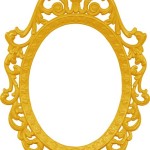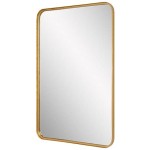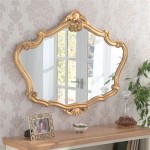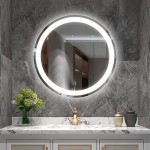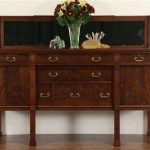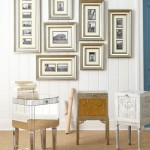How To Break a Mirror Safely and Effectively for Mosaic Art
Creating mosaic art often involves utilizing various materials to achieve intricate designs and textures. One such material is mirror, which, when broken into smaller pieces, can add stunning reflective qualities and visual interest to mosaic projects. However, the process of breaking a mirror can be hazardous if not approached with caution and proper technique. This article provides a comprehensive guide on how to break a mirror safely and effectively for mosaic art, outlining the necessary safety precautions, tools, and methods to achieve desired results.
The decision to incorporate mirror into mosaic artwork stems from its unique ability to reflect light and create a dynamic interplay of shadows and highlights. The reflective surface of mirror pieces enhances the visual depth of the mosaic, adding a sense of dimension and capturing the viewer's attention. Furthermore, the irregular shapes and sizes of broken mirror pieces lend themselves well to creating abstract patterns and textures, allowing for a wide range of artistic expression. Before embarking on the process, it is crucial to understand the properties of glass and the potential hazards involved to ensure a safe and productive experience.
The primary concern when working with glass, including mirrors, is the risk of cuts and injuries from sharp edges. Broken glass can splinter into small, jagged fragments that can easily penetrate the skin. Therefore, appropriate protective gear is essential. Eye protection, such as safety glasses or goggles, is paramount to shield the eyes from flying glass particles. Gloves, preferably cut-resistant gloves, will protect the hands from cuts and abrasions. Long sleeves and pants are recommended to minimize skin exposure. A dust mask or respirator is advisable to prevent inhalation of fine glass dust, which can irritate the respiratory system.
Beyond personal protection, the work area must be prepared to minimize hazards and facilitate cleanup. A stable and sturdy work surface is necessary to prevent the mirror from shifting or sliding during the breaking process. Covering the work surface with a thick layer of newspapers, cardboard, or a drop cloth will help to contain glass fragments and simplify cleanup. Adequate lighting is crucial to ensure clear visibility of the mirror and the surrounding area. A well-lit workspace reduces the risk of accidental cuts and allows for better control over the breaking process.
Before breaking a mirror, it is essential to thoroughly inspect it for any existing cracks or defects. Cracks can weaken the glass and cause it to shatter unpredictably. If a mirror has significant cracks, it is best to avoid using it for mosaic art, as it may be too unstable and prone to crumbling. For mirrors intended for mosaic projects, selecting those with a uniform thickness is desirable. Consistent thickness ensures that the pieces break more evenly, resulting in a more cohesive and balanced mosaic design. Consider sourcing mirrors specifically designed for mosaic art, which may be pre-cut into smaller sizes or treated to minimize sharp edges.
Key Point 1: Essential Safety Measures for Breaking Mirrors
Prioritizing safety is the most critical aspect of breaking a mirror. The following safety measures are non-negotiable:
Eye Protection: Safety glasses or goggles are crucial to protect the eyes from flying glass shards. Even small fragments of glass can cause serious eye injuries.
Hand Protection: Cut-resistant gloves are highly recommended. Regular work gloves may offer some protection, but cut-resistant gloves provide a significantly higher level of protection against sharp glass edges.
Protective Clothing: Long sleeves and pants will minimize skin exposure to glass fragments. Consider wearing an apron to further protect clothing.
Respiratory Protection: A dust mask or respirator is advisable, especially when breaking large mirrors, to prevent inhalation of fine glass dust.
Work Area Preparation: Cover the work surface with a thick layer of protective material, such as newspapers, cardboard, or a drop cloth. Ensure the work area is well-lit and free of distractions.
Handling Broken Glass: Use a brush and dustpan to collect broken glass fragments. Dispose of the glass shards properly in a designated container labeled "Broken Glass." Never handle broken glass with bare hands.
Key Point 2: Tools and Techniques for Controlled Mirror Breaking
Several tools and techniques can be employed to break a mirror in a controlled manner, reducing the risk of uncontrolled shattering and producing pieces suitable for mosaic art. The choice of tools and techniques will depend on the desired size and shape of the mirror pieces, as well as the individual's level of experience.
Glass Cutter: A glass cutter is a specialized tool designed to score glass surfaces, creating a weak point along which the glass can be broken. To use a glass cutter, apply a firm, even pressure and draw the cutter across the mirror surface in a straight line. Avoid pressing too hard, as this can damage the cutter or cause the glass to shatter. After scoring the glass, use a pair of running pliers or tap lightly along the score line to encourage the glass to break cleanly.
Running Pliers: These pliers are designed with a curved jaw that applies pressure to both sides of a score line, encouraging the glass to break along the line. Position the pliers with the curved jaw centered on the score line and apply gentle pressure until the glass breaks.
Hammer and Chisel: A hammer and chisel can be used to break a mirror into smaller, more irregular pieces. Place the chisel on the mirror surface and strike it firmly with a hammer. This method is best suited for creating smaller, more abstract mosaic elements. Take extra care to protect the eyes and hands when using a hammer and chisel, as the glass is more likely to shatter unpredictably.
Tile Nippers: Tile nippers are a versatile tool for shaping and trimming glass pieces. These pliers have two curved jaws that allow for precise cutting and shaping. Tile nippers are particularly useful for creating curved or irregular shapes. Use tile nippers to nibble away at the edges of glass pieces until the desired shape is achieved.
Freehand Breaking: For smaller mirrors or specific artistic visions, carefully breaking the mirror by hand, while wearing proper safety gear, might be a good option. Use the protected hands, apply pressure on the mirror and carefully break it. This method gives more control in creating specific shapes and textures of the broken glass.
Key Point 3: Sorting and Preparing Mirror Pieces for Mosaics
After breaking the mirror, the pieces need to be sorted and prepared for use in the mosaic art project. This involves removing any sharp edges, cleaning the pieces, and organizing them based on size, shape, and color.
Edge Smoothing: Broken mirror pieces often have sharp edges that can pose a safety hazard. Use a glass grinder or sanding block to smooth the edges of the pieces, making them safer to handle and preventing them from cutting the grout during the mosaic process. Ensure the grinder or sanding block is specifically designed for glass and use water as a lubricant to minimize dust and heat.
Cleaning: Clean the mirror pieces with a mild detergent and water to remove any dirt, dust, or fingerprints. This will ensure that the adhesive adheres properly to the glass surface. Rinse the pieces thoroughly with clean water and allow them to dry completely before using them in the mosaic.
Sorting: Sort the mirror pieces by size, shape, and color to facilitate the mosaic design process. This will make it easier to find the right piece for a particular area of the mosaic. Consider using small containers or trays to organize the pieces. Storing similarly shaped or sized pieces together will save time during the assemblage process.
Backing Preparation: Depending on the adhesive used, it might be necessary to prepare the back of the mirror pieces. Etching the back lightly can enhance the adhesive bond. This is especially important for larger mirror pieces or for mosaics that will be exposed to moisture or temperature fluctuations.
Breaking mirrors for mosaic art can be a rewarding and creative process. However, it is essential to prioritize safety and follow proper techniques to minimize the risk of injury. By adhering to the guidelines outlined in this article, aspiring mosaic artists can confidently and effectively break mirrors to create stunning and unique works of art.

Broken Mirror Mosaic 4 Steps Instructables

Diy Mirror Mosaic Art Wall Decor From Broken Tutorial Unique Festive Ideas

Diy Mirror Mosaic Wall Art Petalisbless

Diy Mirror Mosaic Wall Art Glam Decor Broken

Diy Mirror Mosaic Wall Art Petalisbless

Mirror Mosaic Warning How To Blog

How I Made A Diy Contemporary Art Shattered Mirror

Diy Mirror Mosaic Wall Art Petalisbless

Broken And Mosaic Mirrors Are Bad Feng Shui Myth Or Truth

Diy Mirror Mosaic Wall Hangings Holeh Pocket
